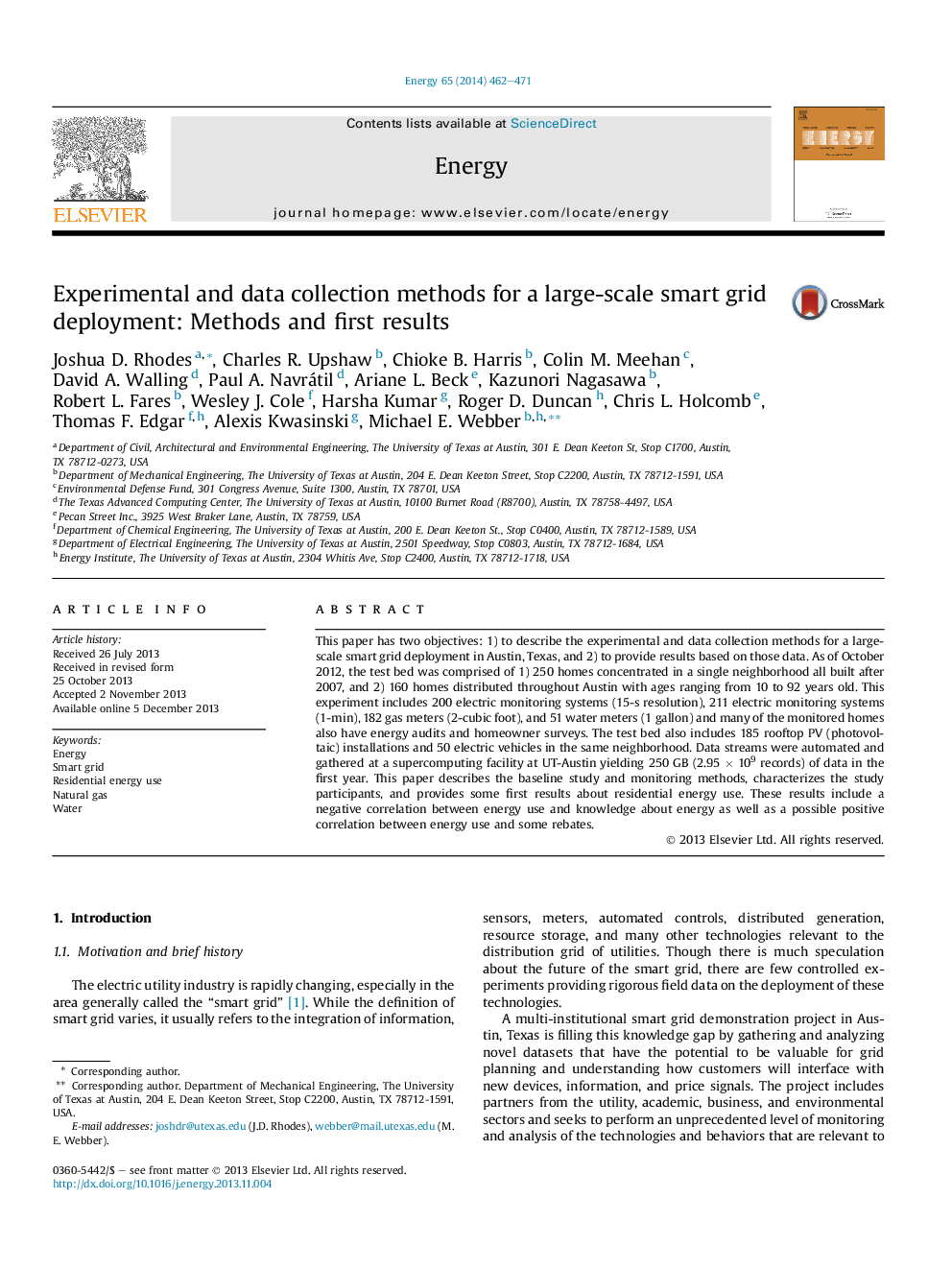| Article ID | Journal | Published Year | Pages | File Type |
|---|---|---|---|---|
| 1732702 | Energy | 2014 | 10 Pages |
•We explain the data collection, transmission, and curation methods for a smart grid demonstration project in Austin, TX.•The data include highly granular measurements of electricity, natural gas, and water for hundreds of homes.•We include lessons learned from the multiple data collection, transmission, and storage systems.•We use the data in the project to assess the energy and economic effects of residential energy retrofits.
This paper has two objectives: 1) to describe the experimental and data collection methods for a large-scale smart grid deployment in Austin, Texas, and 2) to provide results based on those data. As of October 2012, the test bed was comprised of 1) 250 homes concentrated in a single neighborhood all built after 2007, and 2) 160 homes distributed throughout Austin with ages ranging from 10 to 92 years old. This experiment includes 200 electric monitoring systems (15-s resolution), 211 electric monitoring systems (1-min), 182 gas meters (2-cubic foot), and 51 water meters (1 gallon) and many of the monitored homes also have energy audits and homeowner surveys. The test bed also includes 185 rooftop PV (photovoltaic) installations and 50 electric vehicles in the same neighborhood. Data streams were automated and gathered at a supercomputing facility at UT-Austin yielding 250 GB (2.95 × 109 records) of data in the first year. This paper describes the baseline study and monitoring methods, characterizes the study participants, and provides some first results about residential energy use. These results include a negative correlation between energy use and knowledge about energy as well as a possible positive correlation between energy use and some rebates.
